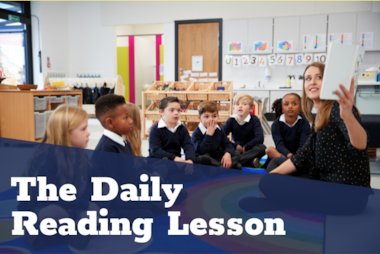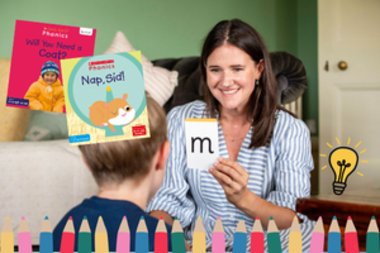Scholastic Reading Audit: Key issues and trends in the teaching of reading
From phonics and comprehension to interventions and libraries: How are schools approaching the teaching of reading?
Five years ago we published the Scholastic Reading Audit, a comprehensive tool designed to challenge and support the teaching and learning of reading in schools, MATs and other groups of schools. This has proved more successful than we ever anticipated with nearly 1,400 schools completing the audit since April 2017 and working with Scholastic to review and improve the teaching of reading in their school.
Given the wealth of data and insight at our disposal, we have created our first summary report highlighting the key issues and trends coming out of the Scholastic Reading Audit up to the end of the 2020-21 academic year. Our analysis finds that 85% of schools have reading in their school improvement plan: but whilst reading is a huge improvement priority for most schools, the subsequent findings suggest that strategies, policies and implementation plans are underdeveloped or often variable in practice.
Here are 12 key headlines from the report:
1. 94% of schools follow a systematic synthetic model of teaching phonics or predominantly do with other methods. The greatest impact and satisfaction ratings are seen by schools which run one programme (i.e. they do not mix and match resources).
2. 70% of respondents undertake guided reading at their school but many schools do not have a policy on how often this should take place. Additionally, 31% do not understand what level of text is appropriate for each child.
3. 92% of teachers undertake shared reading and 50% deliver close (or repeated) reading. However, 63% do not use a reciprocal reading method of teaching reading (and 28% rate the quality of reciprocal reading teaching in their school as Inadequate).
4. Feedback from all respondents suggests that schools are generally doing really well with the phonics check (77% at or above the national standard). This focus and achievement, however, does not always translate to ‘reading’ in Key Stage 1 and Key Stage 2.
5. For ‘strivers and thrivers’, 54% of schools say they do not have appropriate book stock for high-interest, low-ability readers – and whilst 64% claim to have necessary stock for gifted readers, over a third do not.
6. The majority of respondents say Reception, Year 1 and Year 2 class teachers read out loud to their class every day. However, around 30% of teachers do not read out loud to their classes at all. For those who do not, 97% say it is because they do not have enough time for whole class reading.
7. The majority of schools allow children to read books independently every day, and if not two or three times a week. However, almost a quarter (24%) do not have timetabled sessions. In addition 68% do not have eBooks available that pupils can read independently and 26% say they do not have a good selection of reading books in the classroom.
8. Almost 100% of schools encourage children to read at home with their parents, yet a high percentage do not offer events with parents to advise them on how best to read with their children and 89% do not run adult literacy classes for parents who need additional support. A further 89% say they do not engage with local nursery schools and play groups to encourage early reading.
9. 92% of respondents have a school library and on average schools have approximately 500-1,000 books on site. However, given the CILIP benchmark of 10-13 books per pupil, the average primary school library should have 2,500-3,000 titles suggesting that schools are significantly understocked.
10. 48% of schools only replace 0-2.5% of their book stock annually – just 6% meet the recommended 10-12.5% turnover – and nearly 60% have books older than 15 years. Additionally, 68% report that their school does not have a librarian, and most schools never take their children to the local library.
11. 71% say reading is regularly rewarded and celebrated in their school. 95% have a World Book Day event, but 67% do not run Book Clubs, 18% do not organise Book Fairs and 9% do not have reading displays. 28% of schools do not have visits from children’s book authors and poets at any time.
12. In terms of teacher training and CPD, every single area of reading identifies a need for more support for both teachers and teaching assistants. The biggest collective need, however, is around reciprocal reading.
We presented this report for the first time in our recent free Scholastic Reading CPD event Pedagogy to practice; how to create a high-impact; low workload reading lesson, held in collaboration with Rachel Clarke, an independent literacy consultant in Primary English and author; which also saw the launch of the Daily Reading Lesson crafted by Rachel (you can read more about that here).
Back to the Scholastic Reading Audit, we have updated it with Rachel to ensure it supports the latest DfE guidance on the teaching of reading: including The Reading Framework: Teaching the foundations of literacy; the new list of validated systematic synthetic phonics programmes; and the Ofsted Framework. It is also now linked to the seven pillars of reading: oral language, phonological awareness, phonics, vocabulary, fluency, comprehension, and reading for pleasure that we advocate at Scholastic.
The audit is completely free of charge, all of the writing and editing process entirely independent, and if you would like to understand more about our approach and the impact do take a look at our school and MAT case studies.

Chris Ratcliffe is Head of Education and UK Export at Scholastic
Similar Posts
-

Reflections on the teaching of reading
In this guest blog post, Maddie Towne, a Year 6 Teacher and English Lead at Fossebrook Primary School reflects on her experiences of the teaching of reading.
-

Introducing the Daily Reading Lesson
Scholastic launched the Scholastic Reading Audit five years ago, a comprehensive tool designed to support primary school teachers and leaders in teaching children to read. Over the years, we have seen some truly brilliant…
-

Phonics Books: What Parents Need to Know
Miss Mabel from Reading Roots explains how to choose the right books for early reading success
